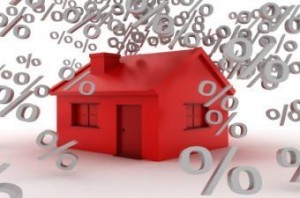 While the nation's unemployment rate (5.5 percent) and the number of unemployed persons (8.7 million) for May 2015 remained virtually unchanged from the previous month, the number of jobs added in May increased substantially from April up to 280,000, according to the May 2015 Employment Summary released by the Bureau of Labor Statistics (BLS) on Friday.
While the nation's unemployment rate (5.5 percent) and the number of unemployed persons (8.7 million) for May 2015 remained virtually unchanged from the previous month, the number of jobs added in May increased substantially from April up to 280,000, according to the May 2015 Employment Summary released by the Bureau of Labor Statistics (BLS) on Friday.
May's job gains represented in an increase of about 73,000 from the previous three-month average (207,000) and an increase of nearly 30,000 from the previous 12-month average of jobs per month (251,000). According to the BLS, the largest gains occurred in professional and business services, leisure and hospitality, and health care.
"Today’s May jobs report confirms that a rebound in economic activity is in progress," Fannie Mae SVP and chief economist Doug Duncan said. "A strong uptick in employment related to discretionary spending, such as in retail trade and leisure and hospitality, combined with a surge in May auto sales to a near-decade high reported earlier this week, suggest that consumers are poised to bounce back after a breather early this year. In addition, the employment report showed an acceleration in average hourly earnings, which is in line with recent trends of strengthening personal income growth and other broader measures of wages and salaries. The consumer response to healthy job growth and lower energy costs that was expected to start the year appears to finally be underway. Consumer spending growth is likely to tick up from its lackluster growth in the prior quarter, but isn’t expected to be as robust as the fourth quarter of 2014."
Revised, employment gains for March and April were a combined 32,000 more than previously reported (March's job gains were revised from 85,000 up to 119,000, and April's were revised down slightly from 223,000 to 221,000).
With approximately 3.01 million jobs added in the last year and the job situation seemingly recovered from a disappointing March, the housing market may be reaping the benefits later in the year, according to analysts.
"The May Jobs Report was a good affirmation that indeed the economy is back on a positive track after another dismal winter. This is very positive for housing," Realtor.com chief economist Jonathan Smoke said. "The consensus expectation was for 220,000 jobs and a static unemployment rate of 5.4 percent. Instead, we got 280,000 jobs plus upward net revisions to prior months and unemployment at 5.5 percent as more people entered the labor force. The economic backdrop is that we’ve created 3 million jobs over the last 12 months. And almost as important, the critical age group of 25-34 year olds has seen 1 million jobs created over the same time frame."
Economists, including Smoke, have pointed to the 25-34 age group (millennials) as critical to the housing market because those in that group make up a large portion of first-time homebuyers.
"As that group’s economic situation continues to improve, their housing activity follows and has a material impact on both existing and new home sales," Smoke said. "With more jobs, more people in the labor force, and higher wages materializing, this spring’s strong pace for home sales will continue."
Hourly wage gains, often cited by economists and analysts as critical to the housing recovery, jumped by 8 cents from April to May up to $24.96 and have increased by 2.3 percent year-over-year. Private-sector production and non-supervisory employees saw hourly wages rise by 6 cents in May up to $20.97.
The unemployment rate most commonly reported, the U3 rate, remained virtually unchanged for May at 5.5 percent. The U6 unemployment rate, which counts both people without work seeking full-time employment and those workers "marginally attached to the labor force and those working part-time for economic reasons," remained unchanged from April to May at 10.8 percent and is down from 12.2 percent in May 2014. In May, the BLS reported 1.9 million marginally attached workers (a year-over-year decline of 268,000) and 6.7 million employed part-time for economic reasons (sometimes called involuntary part-time workers). The U6 unemployment rate has not been below 10 percent since May 2008, when it was reported at 9.7 percent. It last reached its peak of 17.1 percent in April 2010.

 theMReport.com Your trusted source for mortgage banking news
theMReport.com Your trusted source for mortgage banking news








